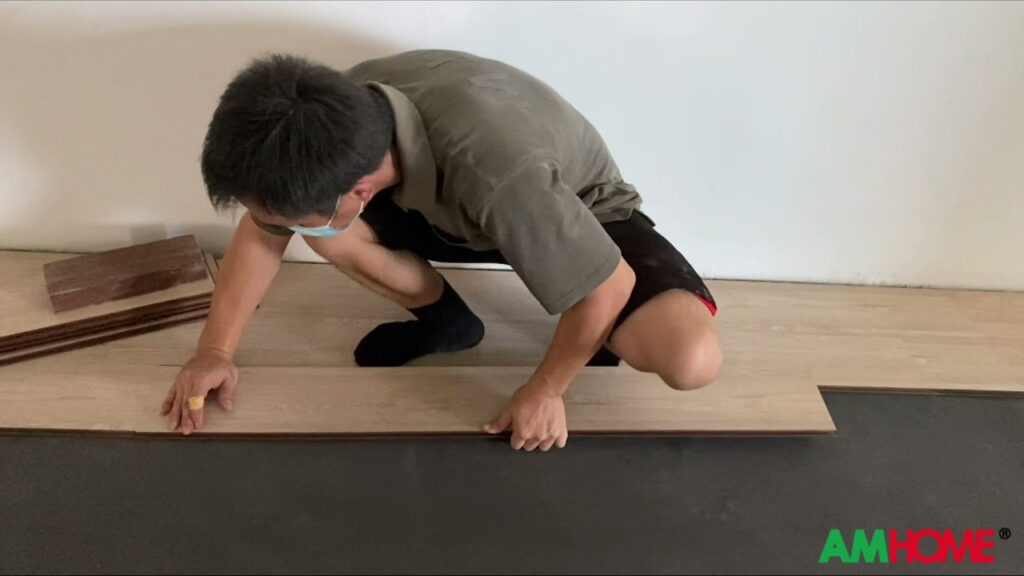The Benefits of Bamboo Flooring
Bamboo flooring offers numerous advantages that make it an appealing option for homeowners. Firstly, bamboo is an eco-friendly material as it is a highly renewable resource. It grows much faster than traditional hardwood trees and can be harvested without causing any damage to the environment. This sustainability factor has made bamboo flooring a popular choice for those seeking to reduce their environmental footprint.
In addition to its eco-friendliness, bamboo flooring is known for its durability. It is harder than many hardwoods, making it less susceptible to dents and scratches. This makes bamboo flooring a practical choice for high-traffic areas in the home, such as hallways and living rooms. Its resilience also makes it a favorable option for pet owners who require a flooring material that can withstand the wear and tear caused by pets.
Furthermore, bamboo flooring offers a distinct and aesthetic appeal. Its natural, light color and unique grain patterns add a touch of elegance to any room. This can help create a warm and inviting ambiance within the home. Additionally, bamboo flooring can be easily integrated into various interior design styles, ranging from modern to traditional, making it a versatile choice for homeowners with diverse tastes.
Lastly, bamboo is known for its hypoallergenic properties, making it an ideal choice for individuals with allergies or respiratory sensitivities. Dust and other allergens are less likely to adhere to bamboo flooring, contributing to better indoor air quality and a healthier living environment for the occupants of the home.
Pros and Cons of Cork Flooring
When considering cork flooring for your home, it’s important to weigh the pros and cons to make an informed decision. One major advantage of cork flooring is its natural cushioning, making it comfortable to walk on and reducing the strain on the feet and joints. Additionally, cork is a sustainable material, as it’s harvested from the bark of cork oak trees without harming the trees themselves.
On the downside, cork flooring is susceptible to damage from heavy furniture and high heels, requiring extra caution and maintenance to preserve its appearance. Furthermore, exposure to UV rays can cause cork to fade over time, necessitating the use of area rugs or curtains to protect it from direct sunlight. Despite these drawbacks, cork flooring remains a popular and eco-friendly choice for many homeowners seeking a unique and comfortable flooring option.
In terms of maintenance, cork flooring demands regular sealing to prevent damage from moisture and stains. However, this upkeep is balanced by its natural antimicrobial properties, which inhibit the growth of mold and mildew, contributing to a healthier indoor environment. It’s important to carefully consider these pros and cons to determine if cork flooring is the right choice for your home.
Comparing the Environmental Impact
When it comes to assessing the environmental impact of products or activities, it’s essential to consider various factors to make a comprehensive comparison. One crucial aspect to examine is the carbon footprint, which refers to the total amount of greenhouse gases emitted throughout the lifecycle of a product, service, or activity. This includes factors such as raw material extraction, manufacturing, transportation, use, and disposal. By comparing the carbon footprints of different options, we can make more informed decisions about their environmental impact.
In addition to carbon footprint, it’s important to consider other environmental factors such as water and energy usage, air and water pollution, and waste generation. All of these elements play a role in assessing the overall environmental impact of a product or process. By evaluating and comparing these factors, we can gain a more holistic understanding of how different options stack up in terms of their environmental consequences.
Furthermore, considering the life cycle of a product is crucial in comparing environmental impacts. This involves analyzing the environmental effects of all stages of a product’s life, including raw material extraction, production, distribution, use, and end-of-life disposal or recycling. By understanding the entire life cycle, we can identify opportunities for improvement and make more conscious choices to minimize environmental impact.
In conclusion, comparing the environmental impact of different products or activities requires a comprehensive assessment of various factors such as carbon footprint, water and energy usage, pollution, and life cycle analysis. By considering these elements, we can make more informed choices and strive to minimize the environmental impact of our decisions.
Maintenance and Longevity
When it comes to maintaining the longevity of your belongings, regular upkeep and care play a crucial role. Whether it’s your vehicle, electronic devices, or even household appliances, a proactive approach to maintenance can significantly extend their lifespan. By adhering to the manufacturer’s recommended maintenance schedule, you can prevent potential issues and ensure that your items continue to function optimally for years to come.
Additionally, investing in high-quality products and materials can contribute to their longevity. When you prioritize durability and reliability during your purchasing decisions, you are more likely to have items that withstand the test of time. Proper storage and handling also play a key role in preserving the longevity of your possessions. Storing items in a controlled environment, such as a cool and dry location, can prevent premature wear and deterioration.
Furthermore, staying informed about the latest maintenance techniques and technologies can help you adapt to new strategies for prolonging the life of your belongings. Keeping an eye on industry developments and advancements in maintenance practices allows you to implement the most effective methods for preserving the longevity of your possessions. Ultimately, by prioritizing regular maintenance, investing in quality, and staying informed about best practices, you can ensure that your belongings serve you well for years to come.
Choosing the Right Flooring for Your Home
When it comes to choosing the right flooring for your home, there are several factors to consider. The first step is to assess the traffic and usage in the specific areas where the flooring will be installed. For high-traffic areas such as entryways, kitchens, and living rooms, durable and easy-to-clean options like hardwood, laminate, or luxury vinyl may be the best choice. In contrast, softer and more comfortable flooring options like carpet or area rugs may be more suitable for bedrooms and cozy lounging areas.
In addition to considering traffic and usage, it’s essential to think about the aesthetic and style you want to achieve. Each type of flooring has its own unique look and feel, so it’s important to select a flooring option that complements the overall design of your home. For a sleek and modern look, you might opt for polished concrete or large-format tiles, while for a more classic and cozy feel, hardwood or carpet could be the way to go.
Another crucial factor to take into account is maintenance and upkeep. Some flooring materials require more frequent cleaning and maintenance than others. For instance, hardwood floors may need regular polishing and refinishing, while carpet may require more frequent vacuuming and deep cleaning. Consider your lifestyle and how much time and effort you are willing to invest in maintaining your floors before making a decision.
Yet another important consideration is the environmental impact of the flooring material. If sustainability is a priority for you, look for eco-friendly options such as bamboo, cork, or reclaimed wood. These materials not only add a unique and natural touch to your home but also contribute to reducing your carbon footprint.
Factors to Consider
– Traffic and usage
– Aesthetic and style
– Maintenance and upkeep
– Environmental impact
Remember, choosing the right flooring for your home is a decision that will have a significant impact on both the look and functionality of your space, so take the time to weigh the pros and cons of each option before making a selection.


